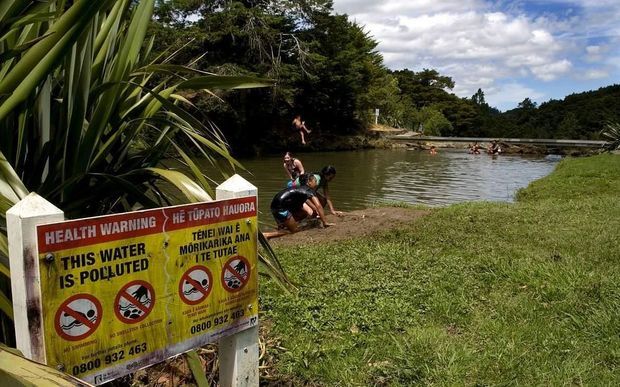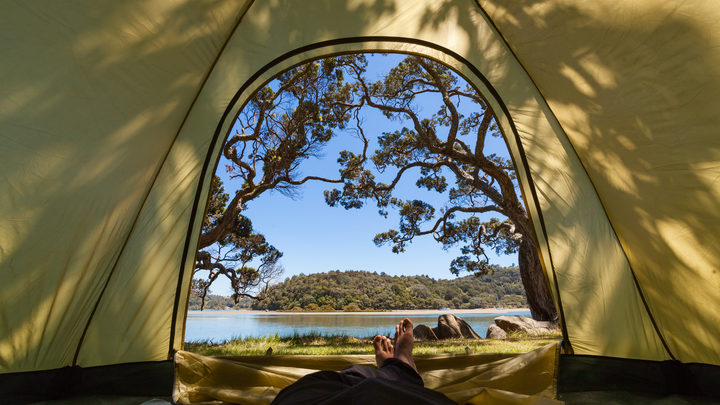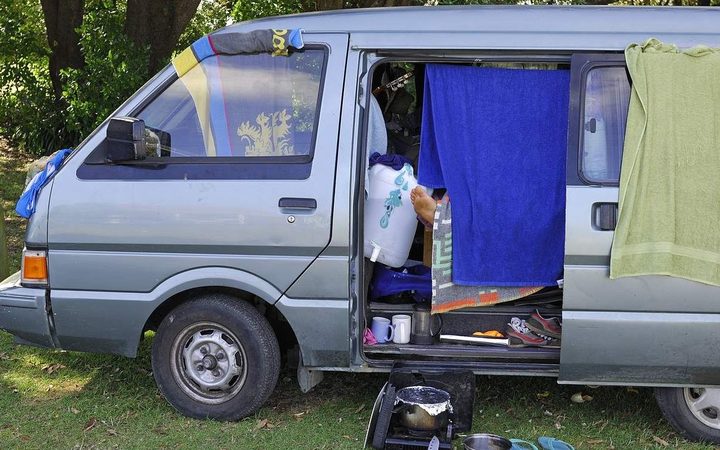At first I got excited, thinking it was a bit of original kiwi journalism but it turns out to be from Reuters.
 Experts say the water quality of once pristine rivers and lakes has deteriorated. (File photo) Photo: RNZ
Experts say the water quality of once pristine rivers and lakes has deteriorated. (File photo) Photo: RNZ
 Effluent from dairy farms has been blamed in the past for contaminating waters. Photo: RNZ/ Carol Stiles
Effluent from dairy farms has been blamed in the past for contaminating waters. Photo: RNZ/ Carol Stiles
 Photo: Courtesy of Off The Beaten Track
Photo: Courtesy of Off The Beaten Track

New Zealand's deteriorating water raises a stink
By Praveen Menon
21 January, 2019
100% Pure? New Zealand's clean, green image took a beating this summer as tourists travelling through the countryside posted pictures of lakes and rivers off limits due to contamination by farm effluent, garbage and human faeces.
 Experts say the water quality of once pristine rivers and lakes has deteriorated. (File photo) Photo: RNZ
Experts say the water quality of once pristine rivers and lakes has deteriorated. (File photo) Photo: RNZ
A booming dairy farming industry, along with a surge in tourists seeking unspoiled natural attractions, has taken its toll on the country's environment, heavily marketed as '100% Pure'.
Particularly affected is its vast network of once pristine rivers and lakes, which are now some of the most polluted among OECD countries, according to some experts.
About 60 percent of them were unfit for swimming, the Environment Ministry said in a report in 2014. Experts said water quality had deteriorated further since.
In a Colmar Brunton survey conducted last month, 82 percent of respondents said they were "extremely or very" concerned about the pollution of rivers and lakes, more than any other issue including living costs, child poverty and climate change.
"(New Zealanders) are extremely worried that they are losing their ability to swim, fish and gather food from their rivers, lakes and streams," said Martin Taylor, the chief executive of Fish & Game New Zealand, a non-government agency that commissioned the survey.
"People see those activities as their birthright, but over the last 20 years, that right is being lost because the level of pollution in waterways has increased as farming intensifies."
With an election coming next year, political experts said water pollution could be a key issue for Prime Minister Jacinda Ardern. Ms Ardern led a coalition to power in 2017 promising social reforms and laws to protect the environment, but business confidence has suffered under her government.
#toomanycows
 Effluent from dairy farms has been blamed in the past for contaminating waters. Photo: RNZ/ Carol Stiles
Effluent from dairy farms has been blamed in the past for contaminating waters. Photo: RNZ/ Carol Stiles
More than 13,000 people signed a #toomanycows Greenpeace campaign on Twitter launched last week calling for a ban on synthetic nitrogen fertiliser.
"New Zealand already has way too many cows, and synthetic nitrogen is the key driver of the dairy intensification and expansion that leads to the dangerous double whammy of harm to rivers and climate," said Nick Young from Greenpeace.
Popular swimming holes near the famed Mt Taranaki in the west of New Zealand's North Island were shut this month due to high E. coli bacteria, an indicator of faecal contamination. Tests are underway to determine the cause, but effluent from nearby dairy farms has been blamed in the past for contaminating these waters.
DairyNZ Chief Executive Tim Mackle said dairy farmers had been doing their bit, with 97 percent of waterways on dairy farms fenced off from cows, and significant work done to establish riparian margins and wetlands.
"The reality is that all types of land use contribute to water quality - and that farming, whether it's vegetables, fruit, beef, sheep, dairy, deer or even wine - must all work together to make sure waterways are protected," Mackle said in a statement.
"The most polluted rivers actually run through urban centres, and this is where the public can do their bit too."
Only about 15 percent of New Zealand's streams run through dairy farms, he added.
'Own goal'
 Photo: Courtesy of Off The Beaten Track
Photo: Courtesy of Off The Beaten Track
Dairy and tourism directly contribute about 3.5 percent and 6.1 percent respectively to New Zealand's $200 billion GDP.
Both industries rely on the country's clean, green image with cascading rivers, unspoiled forests and lush pastures that made it the ideal backdrop for the popular Lord of the Rings and The Hobbit movie series.
The sparsely populated country is spread over a mountainous area about the size of the UK or California, more than a quarter of which is set aside for reserves and national parks.
Hoards of tourists are expected to arrive in the country next month during the Chinese New Year, a peak travel season, which residents feel will take a further toll on the natural environment. Chinese are the second largest source of tourists to New Zealand after neighbouring Australia, according to 2018 data.
Apart from polluting the water, residents also fear mass tourism and freedom campers may destroy the country's iconic landscape, as seen in places like Venice, Boracay and Bali.
Overcrowding in Venice forced the local administration to restrict access to tourists while Boracay was shut down last year, after mass tourism turned the famed Philippines island into a "cesspool".

A freedom camper. Photo: PHOTO NZ
Richard Davies, tourism policy manager at the Ministry of Business, Innovation and Employment, said the increase in the number of campers had caused problems in some areas, waste being one of them.
"We have a collective duty to care for our environment and for New Zealand, and there have been a number of initiatives to help educate local and international campers on how to camp responsibility, and funding for infrastructure to help local bodies to address the issues that can arise," he said.
Mike Joy, a senior researcher at Victoria University of Wellington's Institute for Governance and Policy Studies said the environment was paying the price for hands-off governance and the intensification of dairy and tourism industries.
"It's an own goal... they are shooting themselves in the foot. The biggest value add this country can have is its clean, green image and they are just ruining that image," Mr Joy said.
The government has said it was committed to improving water quality. In 2017 it set a national target of making 90 percent of New Zealand's large rivers and lakes swimmable by 2040, with an interim target of 80 percent swimmable by 2030.
Mr Joy, who is a member of some government working groups, said change would only happen if governments took on the powerful dairy and tourism industries.
"Right now, a lot more money is spent on spin and propaganda but there's been very little change."
- Reuters
No comments:
Post a Comment
Note: only a member of this blog may post a comment.